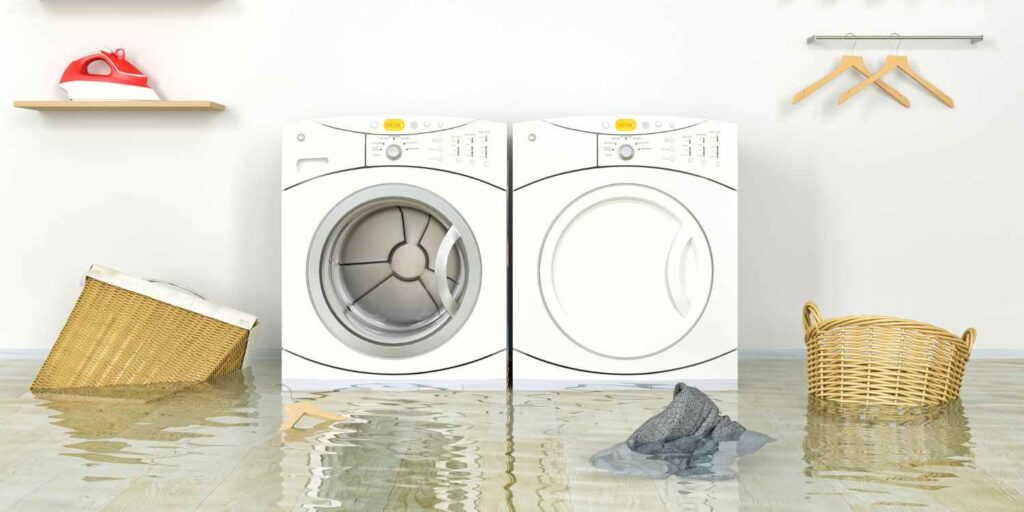Introduction:
Basement flooding can be a devastating experience for homeowners, causing extensive damage to property and posing health risks due to mold and bacteria growth. If your basement has been flooded, it’s essential to act quickly and follow proper cleanup procedures to minimize the damage and restore your home to a safe and healthy condition. In this comprehensive guide, we’ll outline the dos and don’ts of basement flooding cleanup to help you navigate this challenging situation effectively.
Basement Flooding Cleanup Do’s:
- Ensure Safety First:
Before beginning any cleanup efforts, prioritize your safety and the safety of your family members. Turn off the power supply to the affected area to prevent the risk of electric shock. Wear protective gear, including rubber gloves, boots, and a mask, to protect yourself from contaminated water and mold spores. If the flooding is severe or if sewage is present, consider hiring a professional cleanup crew to handle the job safely.
- Remove Standing Water:
Promptly remove standing water from your basement using a wet vacuum, pump, or bucket. Start by removing as much water as possible to prevent further damage to your belongings and minimize the risk of mold growth. Use towels, mops, and sponges to soak up excess moisture from floors, walls, and furniture. Open windows and doors to facilitate airflow and speed up the drying process.
- Dispose of Contaminated Items Properly:
Dispose of any contaminated items that cannot be salvaged, such as carpeting, upholstery, and cardboard boxes. These items can harbor bacteria, mold, and other pathogens that pose health risks. Seal them in plastic bags and dispose of them according to local regulations for hazardous waste disposal. Be sure to clean and disinfect any salvageable items thoroughly before returning them to your basement.
- Clean and Disinfect:
Thoroughly clean and disinfect all surfaces affected by flooding, including floors, walls, and furniture. Use a solution of bleach and water or a commercial disinfectant to kill bacteria, mold, and mildew. Pay special attention to areas that were submerged in water, as well as hidden spaces such as behind walls and under flooring. Allow surfaces to air dry completely before proceeding with repairs or restoration efforts.
- Monitor for Mold Growth:
Keep a close eye on your basement for signs of mold growth in the days and weeks following the flooding. Mold can begin to grow within 24 to 48 hours after exposure to water, so it’s essential to act quickly to prevent further spread. Look for visible signs of mold, such as black spots or musty odors, and address any issues promptly to prevent health problems and structural damage.
Basement Flooding Cleanup Don’ts:
- Don’t Delay Cleanup Efforts:
Avoid delaying cleanup efforts after basement flooding occurs, as this can lead to further damage and mold growth. Act quickly to remove standing water, dry out affected areas, and clean and disinfect surfaces to minimize the risk of long-term consequences.
- Don’t Ignore Safety Precautions:
Never compromise on safety precautions when dealing with basement flooding. Avoid entering flooded areas without proper protective gear, and be mindful of potential hazards such as electrical wires, sharp objects, and contaminated water. If in doubt, seek professional assistance to ensure a safe and thorough cleanup process.
- Don’t Use Bleach on Porous Surfaces:
While bleach can be effective for disinfecting non-porous surfaces, it may not be suitable for use on porous materials such as wood, drywall, and carpeting. Bleach can damage these materials and may not fully penetrate to kill mold and bacteria. Instead, use commercial mold and mildew removers specifically designed for porous surfaces.
- Don’t Neglect Structural Repairs:
After completing the cleanup process, don’t neglect structural repairs and restoration efforts. Address any damage to walls, floors, and foundation walls promptly to prevent further deterioration and ensure the long-term stability of your home. Consider consulting with a professional contractor or restoration specialist to assess the extent of the damage and develop a comprehensive repair plan.
Conclusion:
Basement flooding cleanup can be a challenging and stressful experience for homeowners, but by following the dos and don’ts outlined in this guide, you can navigate the process effectively and minimize the damage to your home. Remember to prioritize safety, act quickly to remove standing water and moisture, and thoroughly clean and disinfect affected areas to prevent mold growth and ensure a safe and healthy environment for you and your family.
Remember, If you’re having any questions on Basement Flooding, do not hesitate to contact us through our website CJ Drain & Plumbing. You can send us any question you have and/or ask for a quote!
At CJ Drain & Plumbing, our team of professionals is always ready to help you.

